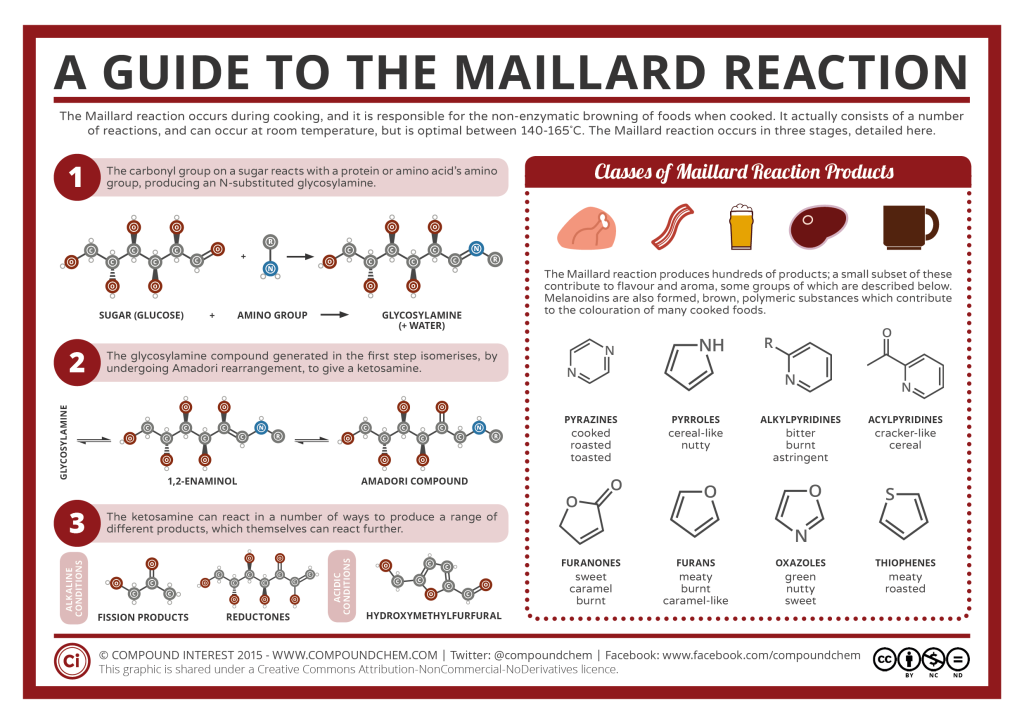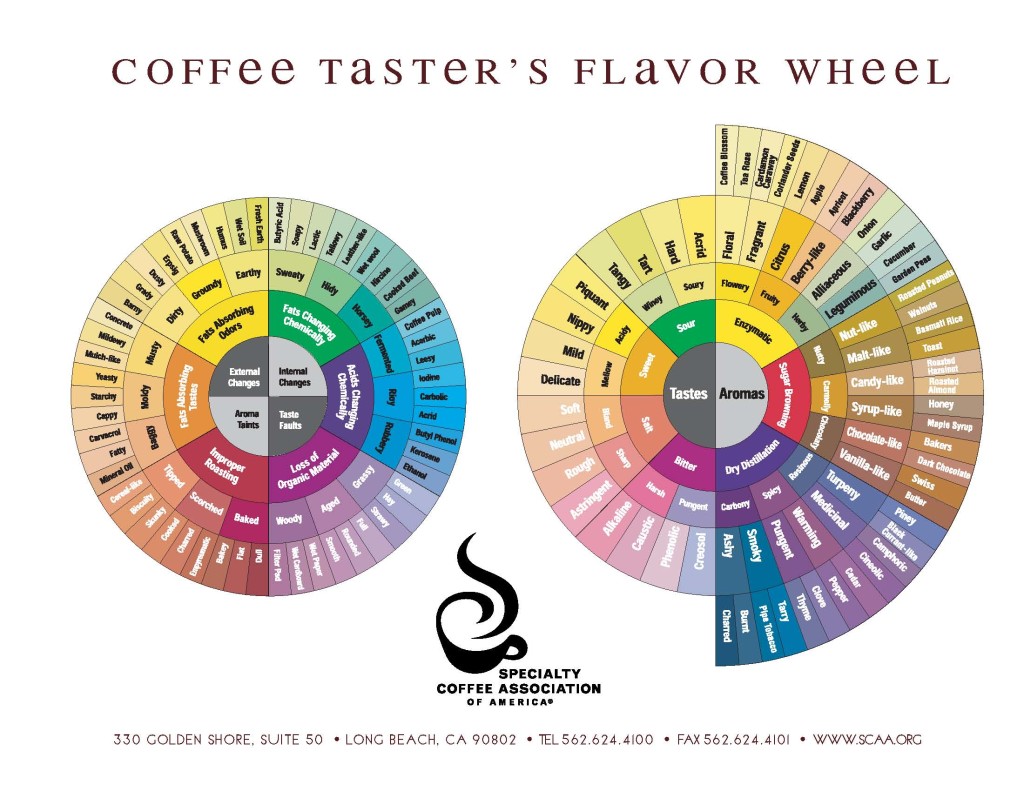ART AND SCIENCE OF ROASTING COFFEE
Coffee roasting is both an Art and a Science.

They come to us green, hard, tasteless. They are shipped from countries like Ethiopia, Guatemala, Peru, Brazil, Nicaragua, Kenya, Colombia Costa Rica. Shipped in 132- or 152-pound sacks. The green beans smell like grass, hay, or the earth.
When you add heat and carefully watch the temperature and time, you create something delicious sought the world over by billions of people.
Roasting coffee transforms the chemical and physical properties of green coffee beans into roasted coffee products. The roasting process is what produces the characteristic flavor of coffee by causing the green coffee beans to change in taste.
Unroasted beans contain similar if not higher levels of acids, protein, sugars, and caffeine as those that have been roasted, but lack the taste of roasted coffee beans due to the Maillard reaction and other chemical reactions that occur during roasting.
The Maillard reaction (MRx) is one of the most important reactions occurring during roasting. MRx involves the binding of an amino acid with a sugar, resulting in the formation of a number of important flavor and colored compounds.
Examples of the Maillard reaction in other products include: toasted bread, flavor of roast meat, grilled steak, etc. The MRx is non-enzymatic which means it requires an external energy source such as heat to initialize the reaction.
What food technologists and cooks commonly call “browning” is not caused by the burning of the product but rather the reaction between the amino compounds (amino acids) and carbonyl/carbohydrates (reducing sugars) once the right amount of heat is applied. These two compounds exist in the green coffee bean and so the Maillard Reaction is what takes place in the roasting process. This complex network of reactions produces flavors in the roasted coffee across the five flavor notes: woody/smoky, roasty/burnt, caramel/nutty, bouillon and meaty/animal. This process is also called non-enzymatic browning and is distinct from caramelization.
This roasting process creates a particularly complex chemical-physical phenomena as the coffee beans undergo many pyrolytic reactions. The chemical reactions induced by heat caramelise the sugars and carbohydrates and converts the fats within the coffee bean into aromatic oils. The roasting process develops caffeone which is a aromatic element containing about 600 chemical substances. The moisture is burnt off during roasting along with the carbon dioxide as acids are broken down and changed producing the characteristic coffee flavor.
The vast majority of coffee is roasted commercially on a large scale, but small-scale commercial roasting has grown significantly with the trend toward “single-origin” coffees served at specialty shops. Some coffee drinkers even roast coffee at home as a hobby in order to both experiment with the flavor profile of the beans and ensure themselves of the freshest possible roast.
The roast master has many factors to consider including the coffee beans’ size, moisture content, quality (grade), and quantity of beans being roasted.
Other more subtle factors considered by the roast master include the altitude, weather conditions (e.g., humidity, temperature), the age of the beans, desired darkness (e.g., type of roast—light, medium, or dark), and anything else that might affect the process and the timing of the roasting.
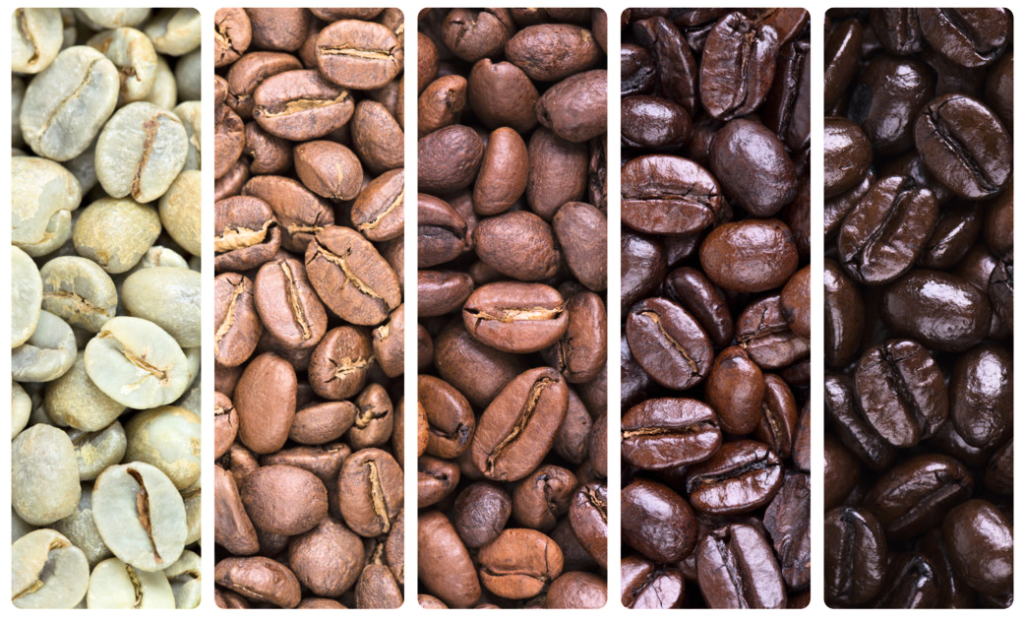
Green beans can be stored for long periods of time without quality loss but roasted beans begin to lose quality the minute the roasting process ends.
CHANGES AT VARIOUS ROASTING TIMES
The roaster is first heated (charged) to 400ƒF and as the green beans are introduced the temperature drops dramatically.
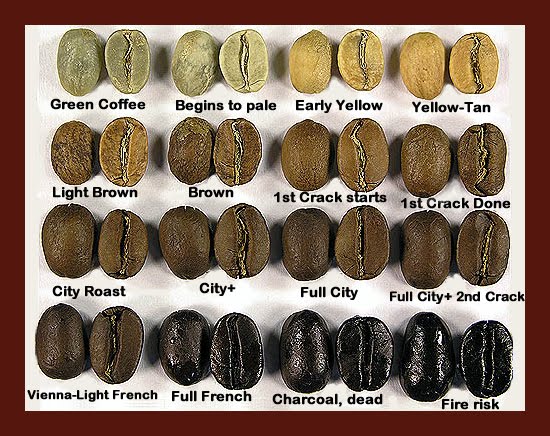
- 3 minutes – The first stage of roasting is endothermic, where the green beans slowly absorb heat from the roaster. The beans begin to turn intense, blanched-vegetable green in color and the roast smells of toast or popcorn and gives off a grassy type fragrance.
- 7 minutes – Bright green fades into yellow. The beans begin to look mottled and the surface becomes wrinkled. The silverskin buckles and the roaster watches carefully for the coffee to smooth out and listens for the sound of the cinnamon roast.
- 9 minutes – The 450ƒF heat causes the internal pressure of the coffee bean cells to rupture. The beans crack (First Crack) or pop and double in size which causes the silverskin to be discarded and the surface of the bean to become smooth and dry. The beans take on an even cinnamon to light chocolate brown color and experiences a weight loss of approximately 5 %. The flavor is somewhat sour, grassy, and snappy and the body light and limpid. It is not considered suitable for espresso.
- 9-11 minutes – The popping gradually subsides, and the color changes from sienna to chestnut brown. The temperature continues to rise and the color changes from light brown to an even medium brown. A weight loss of approximately 13% occurs and the beans. Surface is dry and the taste is a bit sweeter than the light roast but full body and balanced by acid snap, aroma, and complexity.
- 11-14 minutes – At this stage, just as in first pop, the beans suddenly expend heat, emitting a crackling sound. – called the second crack. The roast color is defined as medium-chocolate brown and the beans take on an oily sheen from the oils that rise to the surface. Beans turn a rich chestnut brown. This roast allows the full flavor potential of the bean to be reached. It is somewhat spicy where complexity is traded for a rich chocolaty body and aroma is exchanged for sweetness. It has a full flavor approaching a rather bitter-sweet tang.
- 15 minutes Beans grow quiet and begin to smoke. Having now caramelized, the bean sugars begin to carbonize. Surface is very oily and the coffee bean will darken one final shade as the oils continue to rise to the surface. Flavor is smokey and tastes primarily of the roasting, not of the inherent flavor of the bean.
- 22+ minutes Color of the beans go from a chocolate brown to nearly black respectively. In a French roast, you mainly taste the roast, not the bean.
ROAST LEVELS

- City Roast 1st crack finishes
- City+ Roast between 1st crack and 2nd crack
- Full City Roast on verge of 2nd crack
- Full City+ Roast first audible snaps of 2nd crack
- Vienna/Light French 2nd crack underway
- Full French 2nd crack very rapid, near end
- Fully carbonized 2nd crack over, coffee is 25% ash/charcoal
- beyond fire immanent

COOLING
When the roasters’ senses say it’s precisely the right moment, they spill the smoking coffee out onto a cylindrical cooling tray, where a mechanical sweep and forced air quickly halt the roasting process. When the desired roast and optimum color is achieved they are quickly released into a large metal box, pan or hopper called a cooling tray. The bean must be cooled immediately keeping them from overcooking and prevent auto combustion from modifying the proper grade of toasting. Other options taken by roasters is to release the beans just before the opium roast is achieved and let the coffee temperature be reduced in the cooling trays in normal conditions that allow the pyrolysis to continue.
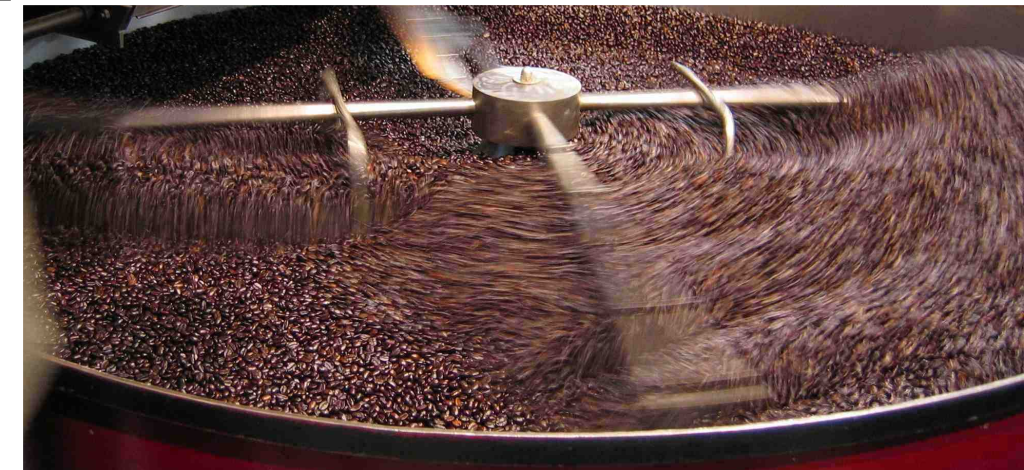
MISTAKES
- In under-roasted beans the green flavors will predominate and the full flavor complexities are not developed. The taste is rough and astringent and has a pasty, nutty, or bread-like flavor that produces a colorless infusion when making.
- Over-roasting produces a black drink, bitter and unpleasant. The taste is burned and has an industrial baked flavored.
- Roasting well into the second pop or darker is not favorable since volatile aromatic compounds are stripped off and oils on the outside of the bean are more easily oxidized.
PROCESS
- During most of the roasting process, coffee absorbs heat. But at the first & second pop the beans suddenly expend heat, emitting a crackling sound.
- The bean goes from endothermic to exothermic during roasting too. Endothermic being heat absorbing and exothermic being heat producing.
- The bean changing process is called pyrolysis or volatilization, and it is identified by darkening in the color of the bean
- The coffee bean actually creates its own heat by chemical reaction similar to that of cement curing or detergent will if you hold it then moisten it.
ROAST MASTER KNOWLEDGE
- Arabica coffee beans tend to require a lighter roast if their distinctive, delicate aromas are to be preserved.
- Depending upon the chemical reaction desired, the coffee bean creates the “essence of the coffee bean.”
- Espresso potential is maximized in roasting when you maximize the sweetness and aroma of the coffee while minimizing the bitterness and acidity.
- Regulating the roasting procedure, one can make more or less of the coffee oil for any given coffee bean.
- Robustas require a slightly darker roast to mask a certain woodiness.
- The coffee bean actually roasts differently if roasted at one temperature as opposed to another temperature till the color is the same.
- The degree of roast and the roast name, simple describe how much the bean is roasted.
- The essence of the coffee bean is seen as the coffee oils. Later, coffee oils become coffeeol. These are oils in that they float. However, they also are water soluble which really makes them not an oil.
- To maximize sweetness you want to minimize the carmelization of sucrose, yet you do not want to roast too lightly or bitter tasting compounds will not thermally degrade.
- Well roasted coffee should be brown, of varying degrees of darkness, but never black.
TASTE
- Acidity, body, aroma, and flavor are all functions of the roast. For any given bean, grind, and brewer, all these characteristics affect taste.
- As the roast darkens, caffeine and acidity decrease proportionately
- Every coffee will taste different at different roast degrees. A roast will bring out certain nuances that will be favorable to amplify
- Extreme dark roasts will tend to have a smoky flavor, and are better suited for brewed coffee rather than espresso.
- Lighter roasts produces a sharper, more acidic taste than do darker roasts
- The darker the roast, the more you will taste the char.
- The degree of roast directly affects the taste of the coffee brew.
- This chemical reaction creates the various different compounds which equate to taste.


